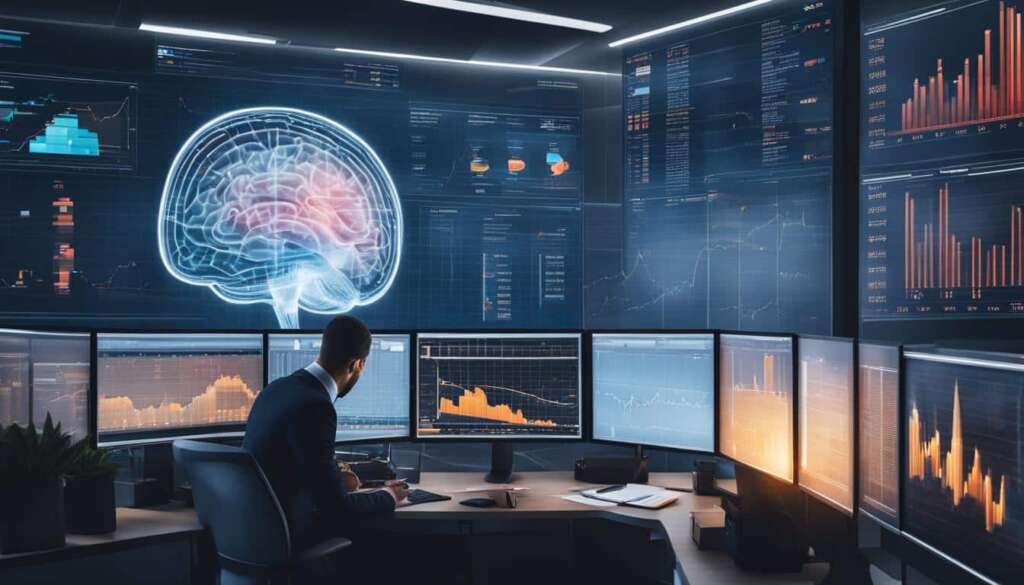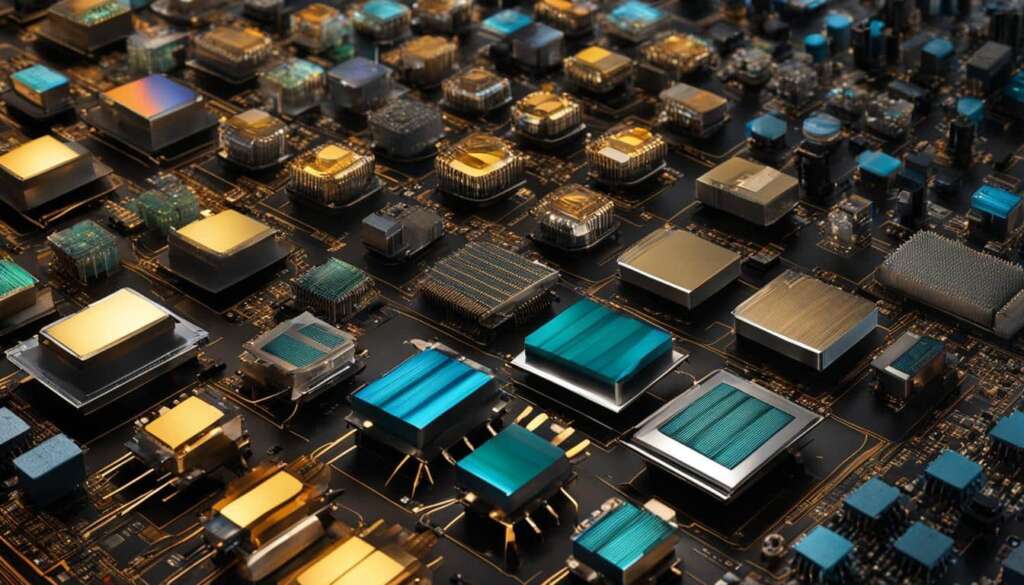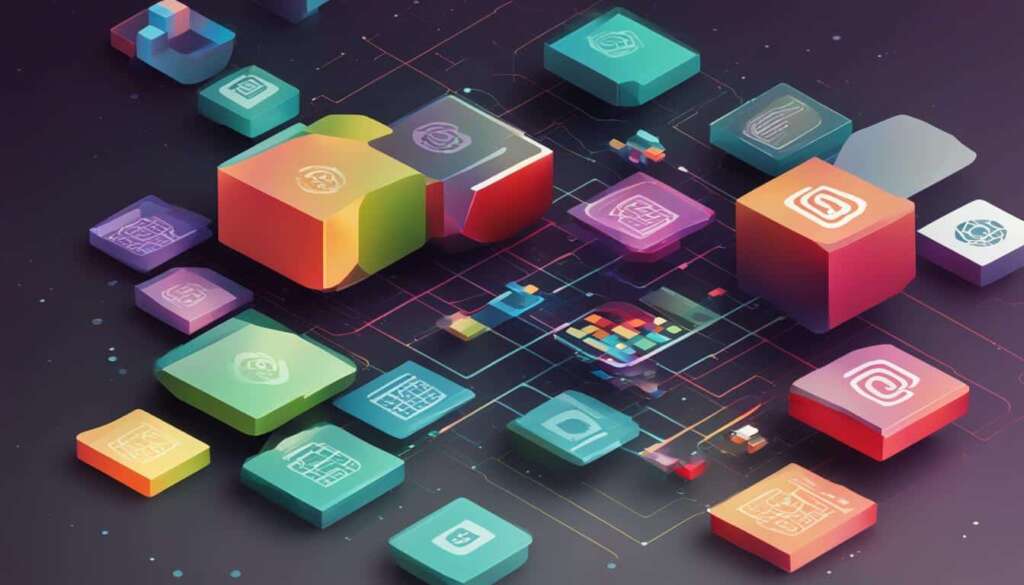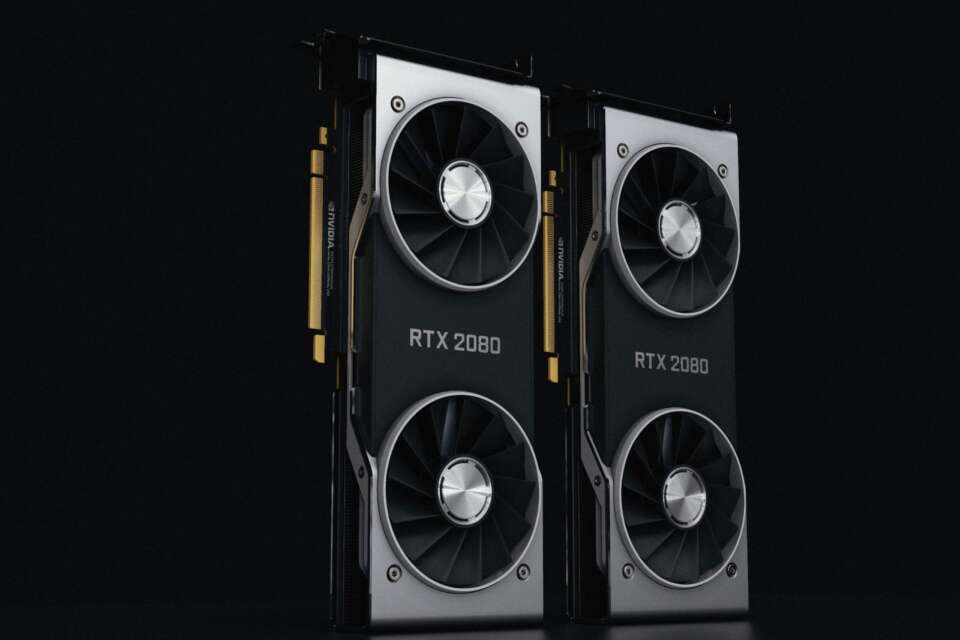Table of Contents
Voice recognition technology has experienced remarkable progress since its inception in the mid-20th century. It has evolved from a limited tool that could only recognize a small set of words to advanced algorithms that can accurately transcribe natural language. The market for speech recognition technology is projected to reach $26.8 billion by 2025, driven by the growing demand for hands-free communication in various industries. In this article, we will explore what speech recognition is, how it works, its applications, and its future potential.
Speech recognition plays a crucial role in our everyday lives, thanks to advancements in natural language processing, machine learning, and artificial intelligence. It enables voice commands for virtual assistants and voice-controlled devices, making our interactions with technology more intuitive and convenient. Additionally, speech recognition technology has enabled voice-to-text capabilities, allowing for automatic speech recognition in various applications. The accuracy and efficiency of speech recognition systems continue to improve, paving the way for enhanced business operations and customer experiences.
In the following sections, we will delve deeper into the intricacies of speech recognition technology, its various applications in different industries, and the benefits it brings to the workplace. From healthcare documentation processes to business applications and beyond, speech recognition is transforming the way we communicate and interact with machines.
What is Speech Recognition?
Speech recognition, also known as automated speech recognition (ASR) or speech-to-text (STT), is a technology that enables computers to transcribe human speech into written text. It uses algorithms to understand natural speech in different languages, dialects, accents, and patterns. The process involves breaking down the speech recording, adjusting for background noise and other factors, and converting it into frequencies that can be analyzed. Speech recognition software relies on machine learning and natural language processing to generate readable transcriptions.
The Process of Speech Recognition
Speech recognition technology works by translating sound vibrations into electrical signals, digitizing the signals, analyzing the digital signals, and matching them with suitable text representing the sounds. This complex process involves signal processing, machine learning, and natural language processing. The accuracy of the output depends on factors such as the quality of the original recording and the complexity of the language. With the help of artificial intelligence and machine learning, speech recognition technology continues to improve over time.
“Speech recognition, also known as automated speech recognition (ASR) or speech-to-text (STT), is a technology that enables computers to transcribe human speech into written text. The process involves breaking down the speech recording, adjusting for background noise and other factors, and converting it into frequencies that can be analyzed.”
Speech recognition technology has become an essential tool in various industries, offering numerous applications and benefits. It facilitates hands-free communication, streamlines documentation processes, and enhances productivity. Whether it’s in healthcare, law enforcement, or business settings, speech recognition technology continues to advance, paving the way for a more efficient and accessible future.
Table: Applications of Speech Recognition Technology
| Industry | Application |
|---|---|
| Healthcare | Simplifying documentation processes and transcribing patient notes |
| Law Enforcement | Improving the accuracy and efficiency of paperwork |
| Business | Enabling voice-controlled customer service, transcription, and data entry |
| Virtual Assistants | Assisting with voice commands, information retrieval, and task management |
| Translation Services | Translating spoken language in real time |
Speech recognition technology has revolutionized the way we interact with computers and devices, making communication more seamless and efficient. As technology continues to advance, speech recognition is expected to play an even bigger role in various aspects of our lives.
How Speech Recognition Works
Speech recognition technology operates through a complex process that involves translating sound vibrations into electrical signals, digitizing and analyzing these signals, and matching them with suitable text representations. This intricate procedure utilizes signal processing, machine learning, and natural language processing to achieve accurate transcriptions and understand spoken language.
At the core of speech recognition is the conversion of sound vibrations into electrical signals. This initial step captures the audio input through a microphone or other recording device, transforming it into a digital format that can be analyzed. Once the sound is digitized, the technology applies advanced algorithms to analyze the digital signals and determine the corresponding text representations. This process relies on machine learning techniques and models trained on vast amounts of data to enhance accuracy and provide reliable transcriptions.
Machine learning and natural language processing play crucial roles in speech recognition technology. By leveraging machine learning algorithms, speech recognition systems can adapt and improve over time, continuously learning from new data and refining their capabilities. Natural language processing algorithms enable the understanding of spoken language patterns, nuances, and context, ensuring more accurate transcriptions and interpretations. These advancements in machine learning and natural language processing have significantly contributed to the evolution and improved performance of speech recognition technology.
Overall, speech recognition technology offers an impressive ability to convert spoken language into written text. Through the integration of signal processing, machine learning, and natural language processing, this technology has become increasingly accurate and efficient. As advancements continue, speech recognition holds great potential for various applications across industries.
| Feature | Description |
|---|---|
| Sound Conversion | Translates sound vibrations into electrical signals for analysis. |
| Digital Analysis | Digitizes and analyzes the electrical signals to identify corresponding text representations. |
| Machine Learning | Utilizes machine learning algorithms to continuously learn and improve accuracy over time. |
| Natural Language Processing | Applies algorithms to understand spoken language patterns, nuances, and context. |
Speech vs. Voice Recognition
While speech recognition and voice recognition are often used interchangeably, they refer to two different processes. Speech recognition translates human speech into written text, while voice recognition is a biometric system that identifies and authenticates a specific user’s voice.
Speech recognition technology analyzes spoken language and converts it into written text using algorithms, machine learning, and natural language processing. It enables computers to transcribe human speech accurately and efficiently, making it a valuable tool in various industries.
Voice recognition, on the other hand, focuses on analyzing the unique features of a person’s voice, such as pitch, tone, and rhythm, to create a unique voiceprint for identification. This technology is commonly used for security purposes, such as unlocking mobile devices or accessing systems.
While speech recognition has broader applications, voice recognition provides an added level of security by using an individual’s voice as a form of biometric authentication. Both technologies play crucial roles in advancing communication and interaction with voice-controlled devices.
Speech vs. Voice Recognition
| Speech Recognition | Voice Recognition |
|---|---|
| Translates human speech into written text | Identifies and authenticates a specific user’s voice |
| Relies on algorithms, machine learning, and natural language processing | Analyzes unique voice features like pitch, tone, and rhythm |
| Used for transcription, virtual assistants, and various business applications | Used for biometric authentication and security purposes |
Types of Speech Recognition Technology
Speech recognition technology can be categorized into two main types: speaker-dependent systems and speaker-independent systems. Each type has its own unique characteristics and applications.
Speaker-Dependent Systems
Speaker-dependent systems are trained by individual users, making them highly accurate for word recognition but only for the specific individual who trained the system. These systems require users to go through a training phase where they provide speech samples for the system to learn and recognize their unique speech patterns. Once trained, the system can accurately recognize and transcribe the trained user’s speech. Speaker-dependent systems are commonly used in applications that require high accuracy and personalized recognition, such as voice-activated personal assistants or voice-controlled devices.
Speaker-Independent Systems
Speaker-independent systems, on the other hand, do not require individualized training. These systems can recognize specific words or phrases without being dependent on the speaker’s identity. They are designed to adapt to different speech patterns, languages, dialects, and accents. While speaker-independent systems may have a lower command word count compared to speaker-dependent systems, they can still achieve high accuracy rates. These systems are commonly used in applications that require broad language support and are not limited to a specific user, such as automated phone systems or voice-enabled navigation systems.
| Speaker-Dependent Systems | Speaker-Independent Systems |
|---|---|
| Trained by individual users | No individualized training required |
| High accuracy for specific users | Adapts to different speech patterns and accents |
| Personalized recognition | Broad language support |
Both speaker-dependent and speaker-independent systems have their own advantages and applications. The choice of which system to use depends on the specific requirements of the application and the desired level of accuracy and personalization.
Speaker-dependent and speaker-independent systems are the two main types of speech recognition technology. Speaker-dependent systems are trained by individual users and offer high accuracy for specific users, while speaker-independent systems adapt to different speech patterns and accents. Both types have their own advantages and applications, but the choice depends on the specific requirements of the application.
Features of Speech Recognition
Speech recognition technology offers a range of features that enhance its accuracy and efficiency. These features include:
- Statistical Speech Recognition: This technique utilizes statistical models to analyze spoken language and improve the accuracy of transcriptions. By analyzing patterns and probabilities, statistical speech recognition provides more precise results.
- Acoustic Modeling: Acoustic modeling focuses on capturing the unique acoustic characteristics of speech. This includes factors such as pitch, tone, and rhythm. By understanding these features, speech recognition systems can better interpret and transcribe spoken language.
- Language Modeling: Language modeling predicts the likelihood of word sequences to understand language patterns. This helps speech recognition systems process speech more accurately, even in situations where words may be ambiguous or have multiple meanings.
- Keyword Spotting: Keyword spotting is a feature that allows speech recognition systems to identify and recognize specific words or phrases within audio streams. It enables users to perform voice commands and search for specific information efficiently.
These features work together to enhance the overall performance and accuracy of speech recognition technology. By leveraging statistical models, acoustic characteristics, language patterns, and keyword recognition, speech recognition systems can transcribe spoken language with greater precision and efficiency.
“Speech recognition technology has evolved significantly, and its features have played a crucial role in its advancement. The utilization of statistical models, acoustic characteristics, language patterns, and keyword spotting has improved the accuracy and efficiency of speech recognition systems, making them more reliable and user-friendly.” – Industry Expert
These advancements in speech recognition technology have led to its widespread adoption in various industries. From virtual assistants to transcription services, speech recognition plays a key role in simplifying tasks and improving productivity. As technology continues to evolve, we can expect further enhancements and new features to make speech recognition even more powerful and versatile.
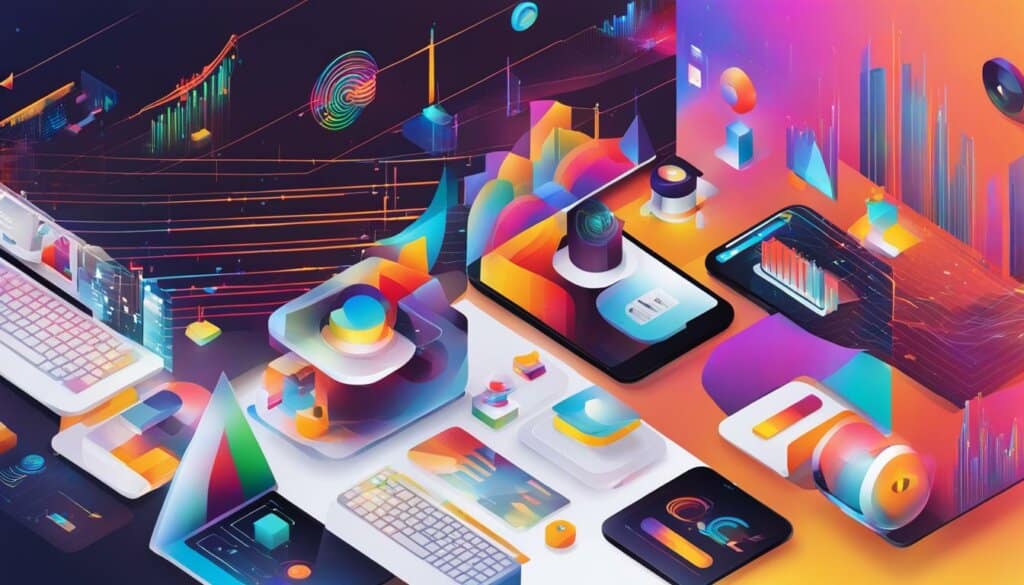
| Features | Benefits |
|---|---|
| Statistical Speech Recognition | Improved accuracy in transcriptions |
| Acoustic Modeling | Better interpretation of speech |
| Language Modeling | Understanding language patterns and ambiguous words |
| Keyword Spotting | Efficient voice commands and targeted searches |
Applications of Speech Recognition Technology
Speech recognition technology has revolutionized various industries, offering a wide range of applications that improve efficiency and enhance user experiences. Let’s explore the diverse uses of this technology in different sectors:
Virtual Assistants:
One of the most popular applications of speech recognition technology is in virtual assistants like Siri, Amazon Alexa, and Google Assistant. These intelligent voice-controlled systems offer hands-free interaction, allowing users to perform tasks, get information, set reminders, and control smart devices using voice commands. They have become invaluable in homes, offices, and other settings, providing convenience and streamlining daily activities.
Translation Services:
Speech recognition technology has transformed the way we communicate across languages. Translation services like Google Translate utilize speech recognition to convert spoken words into written text in real-time. This enables individuals to have conversations with people who speak different languages, breaking down language barriers and facilitating global communication.
Healthcare:
In the healthcare industry, speech recognition technology simplifies documentation processes, reducing the time and effort spent on transcribing patient records, medical notes, and other important documents. Physicians can dictate their observations and clinical findings, allowing for more accurate and detailed records. This not only saves time but also ensures that crucial information is captured for effective patient care and research purposes.
Law Enforcement:
Law enforcement professionals can benefit from the use of speech recognition technology in various ways. It can assist in the transcription of interviews, witness statements, and other audio recordings, saving time and improving accuracy. Additionally, speech recognition can be used to convert spoken conversations into written text during investigations, making it easier to analyze and search for specific information.
Business:
In the business world, speech recognition technology has numerous applications. It can be used for customer service, enabling virtual assistants to understand and respond to customer queries and requests. Speech recognition also simplifies note-taking during meetings, allowing participants to focus on the discussion while the system transcribes the conversation. Moreover, it facilitates voice-controlled data entry, improving efficiency in various business processes such as order management and inventory control.
Overall, speech recognition technology has transformed the way we interact with devices, breaking down barriers and providing innovative solutions across industries. The applications mentioned above only scratch the surface of its potential. As this technology continues to evolve, we can expect to see even more groundbreaking uses in the future.
Speech Recognition Use in Healthcare
Speech recognition technology has become an essential tool in the healthcare industry for streamlining documentation processes. Physicians can use speech recognition software to transcribe notes quickly and accurately, saving time and reducing the risk of errors. This technology is also beneficial for reporting and recording patient encounters, optimizing operations, and improving patient care. By eliminating the need for manual transcription or handwritten notes, speech recognition enhances efficiency and productivity in healthcare settings.
One of the key benefits of speech recognition in healthcare is the ability to create electronic health records (EHRs) more efficiently. With speech recognition software, healthcare professionals can dictate patient information directly into the digital records, reducing the need for manual data entry. This not only saves time but also ensures that the information is accurate and up to date. Additionally, speech recognition technology can assist in the automation of administrative tasks, such as appointment scheduling and prescription ordering, further streamlining healthcare operations.
The use of speech recognition technology in healthcare not only improves workflow efficiency but also has the potential to enhance patient care. By reducing the time spent on documentation, healthcare professionals can allocate more time to direct patient interaction. This allows for better communication and a more personalized approach to patient care. Furthermore, speech recognition can facilitate real-time documentation during patient encounters, providing immediate access to accurate information and enabling timely decision-making.
Benefits of Speech Recognition Technology in Healthcare:
- Streamlines documentation processes
- Reduces the risk of errors
- Improves efficiency and productivity
- Enables the creation of electronic health records (EHRs)
- Automates administrative tasks
- Enhances patient care by increasing time for direct interaction
- Facilitates real-time documentation during patient encounters
Overall, speech recognition technology has transformed the healthcare industry by simplifying documentation processes and improving workflow efficiency. Its ability to create electronic health records, automate administrative tasks, and enhance patient care make it an invaluable tool for healthcare professionals. As technology continues to advance, the future of speech recognition in healthcare holds even more potential for improved medical practices and better patient outcomes.
Speech Recognition Use in Business
Speech recognition technology has revolutionized the way businesses operate by enabling a wide range of applications. One key area of implementation is in customer service. With speech recognition, businesses can develop virtual assistants that understand and interpret voice commands, enhancing customer satisfaction and reducing the need for human staff. This technology allows customers to interact with businesses more naturally, improving their overall experience.
Another valuable application of speech recognition in business is in note-taking during meetings. With this technology, employees can simply speak their notes, and the speech recognition software will transcribe the information accurately. This eliminates the need for manual note-taking, ensuring that important information is captured without any errors. Furthermore, speech recognition enables the transcription of entire conversations, making it easier to reference and retrieve specific details.
Speech recognition also plays a crucial role in data entry for businesses. By utilizing voice-controlled data entry systems, employees can input data more efficiently, saving time and reducing the chances of errors. This technology allows for a hands-free approach to data entry, increasing productivity and streamlining business processes. Additionally, speech recognition can be integrated with existing software and systems, making it a versatile tool for various industries.
Overall, speech recognition technology offers numerous benefits to businesses, including improved customer service, simplified note-taking, and enhanced data entry processes. As this technology continues to advance, businesses can expect even more innovative applications that will further optimize their operations and improve efficiency.

Evolution of Speech Technology in the Workplace
The integration of speech recognition technology into the workplace has transformed the way tasks are performed, making operations more efficient and enabling greater mobility for employees. This evolution began with the introduction of voice recognition software in the 1990s, which allowed users to dictate documents and email responses, significantly improving productivity. Over time, major tech companies like Google and Microsoft have developed advanced speech recognition capabilities, enabling personalized recognition and voice control of various applications.
One of the key advancements in speech technology is the integration of voice commands, which allow users to navigate through applications, perform actions, and retrieve information with simple spoken instructions. This hands-free approach has streamlined tasks, reduced the need for manual input, and increased productivity in the workplace.
Furthermore, speech-to-text dictation has become a valuable tool for employees, eliminating the need for typing and allowing for faster document creation. With speech recognition technology, users can simply speak their thoughts and have them automatically transcribed into written text. This feature has proven particularly beneficial for professionals who need to take notes during meetings, interviews, or brainstorming sessions. It ensures that important information is accurately captured and easily accessible.
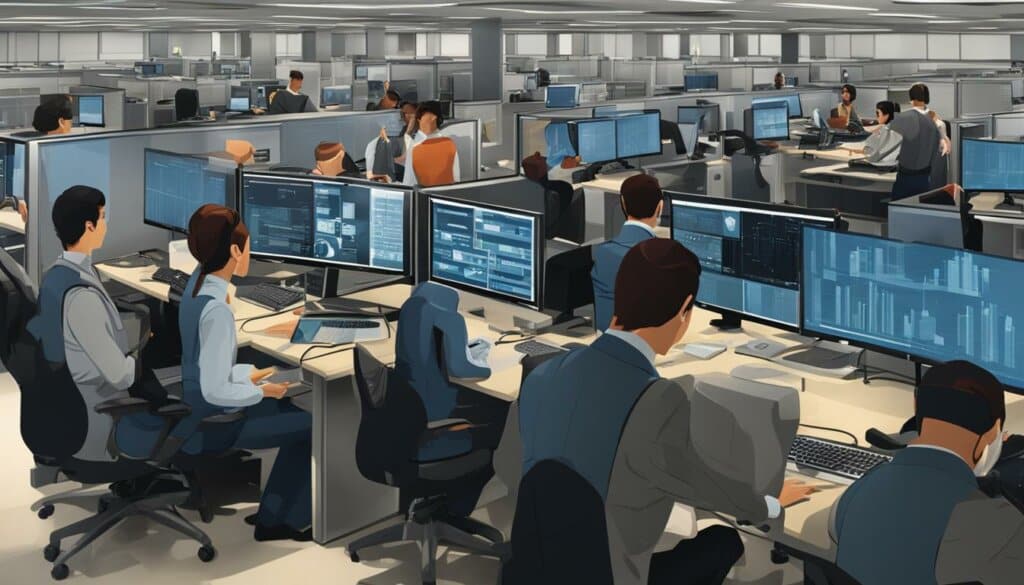
Speech Technology in Action: Transforming the Workplace
Speech recognition technology has found application across various industries, revolutionizing the way businesses operate. In customer service, for instance, speech recognition enables the creation of interactive voice response systems, allowing customers to navigate through menus and perform actions using voice commands. This reduces the need for human staff, enhances customer satisfaction, and improves overall service efficiency.
Another notable application of speech recognition technology is in transcription services. By converting spoken words into written text, it simplifies the process of transcribing audio recordings, interviews, or meetings. This saves time and effort, allowing organizations to quickly access and analyze recorded information.
The benefits of speech recognition technology extend beyond efficiency and productivity. It also contributes to a safer workplace by reducing the risk of repetitive stress injuries associated with prolonged keyboarding. By providing an alternative input method, speech recognition technology provides relief to employees who would otherwise have to rely solely on manual typing.
Summary:
Speech recognition technology has evolved significantly in the workplace, enabling voice commands and speech-to-text dictation to become integral parts of everyday operations. This evolution has streamlined tasks, improved productivity, and enhanced mobility for remote workers. With voice commands, users can navigate applications and perform actions using simple spoken instructions, eliminating the need for manual input. Speech-to-text dictation, on the other hand, enables faster document creation by transcribing spoken words into written text. This has proven beneficial for note-taking during meetings, interviews, and brainstorming sessions. The application of speech recognition technology extends to various industries, transforming customer service, transcription services, and contributing to a safer workplace by reducing the risk of repetitive stress injuries.
Benefits of Speech Recognition Technology in the Workplace
Speech recognition technology offers numerous benefits in the workplace, enhancing productivity, mobility, and injury prevention. By eliminating the need for manual input, speech recognition improves efficiency and streamlines business processes. Users can dictate documents, email responses, and other text, saving valuable time and reducing the risk of errors. This technology empowers employees to focus on core tasks, enabling them to accomplish more in less time.
One of the key advantages of speech recognition technology is its impact on mobility. With the ability to work from anywhere, remote workers can complete tasks on the go, whether they’re commuting, traveling, or handling personal commitments. This flexibility allows for better work-life balance and increases overall job satisfaction.
Using speech recognition technology has been life-changing for me. I can now complete my work while taking care of my children or handling other responsibilities. It has provided me with the freedom and flexibility I need to balance my personal and professional life effectively. – Katherine, Remote Worker
Another significant benefit of speech recognition technology is its role in injury prevention. Traditional typing and mouse usage can cause repetitive stress injuries and musculoskeletal disorders. By providing an alternative input method, speech recognition allows employees to reduce strain on their hands, wrists, and fingers. This lowers the risk of long-term injuries and promotes a healthier work environment.
| Benefits of Speech Recognition Technology in the Workplace |
|---|
| Increased productivity |
| Enhanced mobility for remote workers |
| Injury prevention by reducing strain on hands, wrists, and fingers |
In conclusion, speech recognition technology brings significant advantages to the workplace. It improves productivity, enables mobility for remote workers, and helps prevent injuries related to repetitive strain. As businesses continue to embrace digital transformation, the adoption of speech recognition technology is expected to grow, revolutionizing the way we work and enhancing the overall employee experience.
Conclusion
Voice recognition technology has come a long way over the years, from its early days of limited comprehension to the advanced systems we have today. With continuous advancements in artificial intelligence, machine learning, and natural language processing, the future of voice recognition technology looks promising. Although challenges such as accent recognition and privacy concerns still exist, voice recognition technology is expected to further improve and find new applications in various industries.
The market for voice recognition technology is projected to reach $26.8 billion by 2025, driven by the growing demand for hands-free communication in industries such as healthcare, business, and law enforcement. As speech recognition algorithms continue to become more accurate, businesses can leverage this technology for improved customer service, streamlined workflows, and enhanced productivity.
Looking ahead, the future of voice recognition technology holds immense potential. It is likely to play a crucial role in the development of virtual assistants and voice-controlled devices, further enhancing our interactions with technology. The ongoing advancements in AI and machine learning will lead to even higher accuracy rates and improved language understanding, making voice recognition an indispensable tool in our everyday lives.
While challenges remain, such as the need for better accent recognition and addressing privacy concerns, the possibilities for voice recognition technology are vast. As businesses and industries continue to embrace this technology, we can expect voice recognition to become an integral part of our digital experiences, enabling us to interact with devices and systems in more natural and efficient ways.
FAQ
What is speech recognition?
Speech recognition, also known as automated speech recognition (ASR) or speech-to-text (STT), is a technology that enables computers to transcribe human speech into written text.
How does speech recognition work?
Speech recognition technology works by translating sound vibrations into electrical signals, digitizing the signals, analyzing the digital signals, and matching them with suitable text representing the sounds.
What is the difference between speech recognition and voice recognition?
While speech recognition translates human speech into written text, voice recognition is a biometric system that identifies and authenticates a specific user’s voice.
What are the types of speech recognition technology?
Speech recognition technology can be categorized into speaker-dependent and speaker-independent systems.
What are the features of speech recognition technology?
The features of speech recognition technology include statistical speech recognition, acoustic modeling, language modeling, and keyword spotting.
What are the applications of speech recognition technology?
Speech recognition technology is used in virtual assistants, translation services, custom voice commands, healthcare, law enforcement, and various business applications.
How is speech recognition used in healthcare?
Speech recognition simplifies documentation processes in healthcare, allowing physicians to quickly and accurately transcribe notes, record patient encounters, and optimize operations.
How is speech recognition used in business?
Speech recognition improves customer service, simplifies note-taking, transcribes conversations, and enables voice-controlled data entry in business applications.
How has speech recognition technology evolved in the workplace?
Speech recognition technology has integrated voice commands and speech-to-text dictation into everyday operations, improving productivity, and enhancing mobility for remote workers.
What are the benefits of speech recognition technology in the workplace?
Speech recognition technology improves productivity, mobility, and reduces the risk of repetitive stress injuries associated with manual input in the workplace.
What is the future of voice recognition technology?
With continuous advancements in artificial intelligence, machine learning, and natural language processing, voice recognition technology is expected to further improve and find new applications in various industries.
Source Links
- https://www.kardome.com/blog-posts/speech-recognition-technology-workplace
- https://www.linkedin.com/pulse/speech-recognition-applications-features-future-neil-sahota-萨冠军-
- https://www.totalvoicetech.com/a-brief-history-of-voice-recognition-technology/



